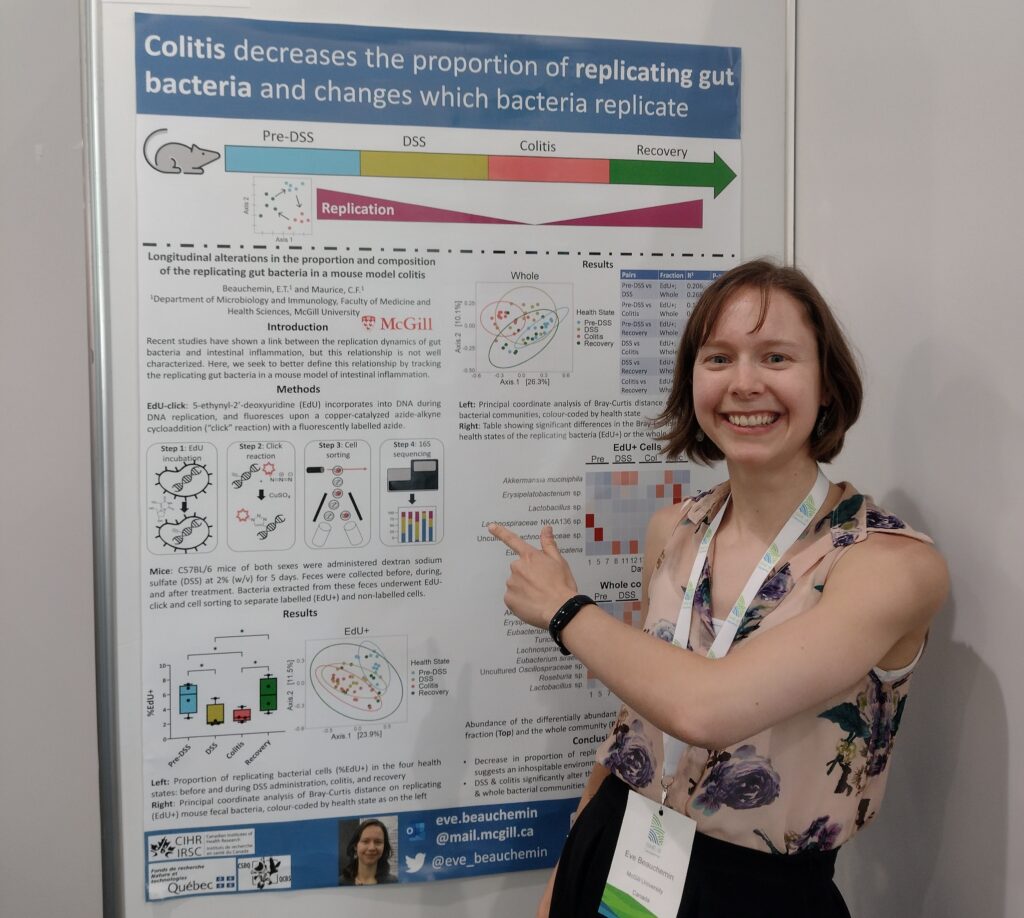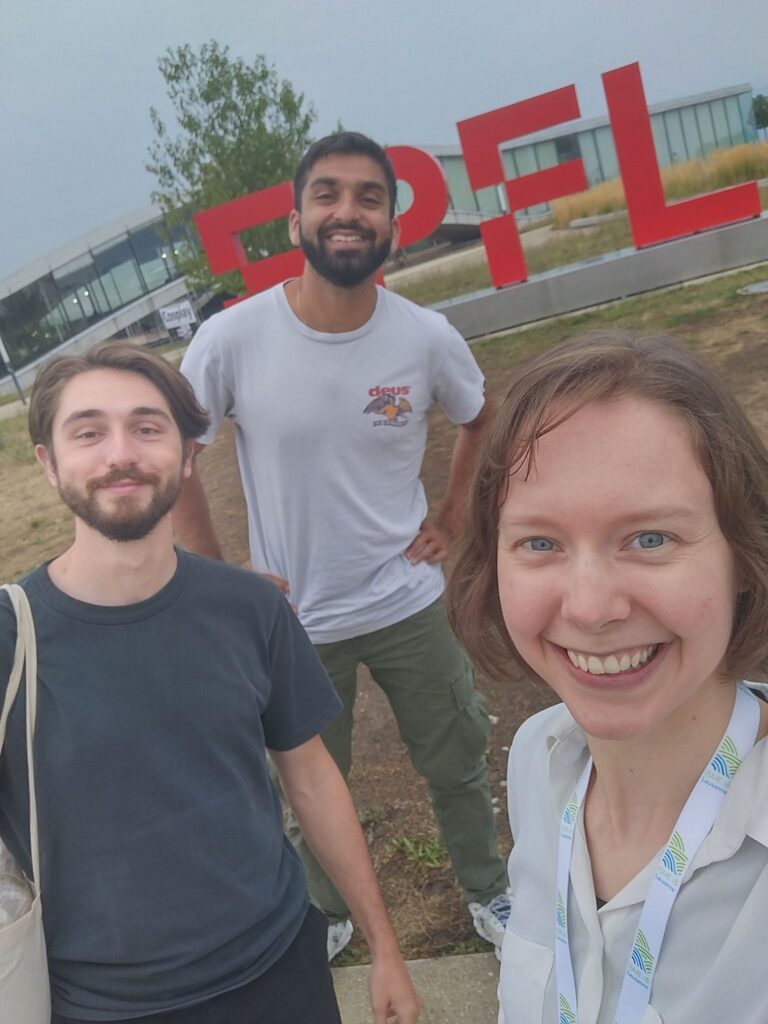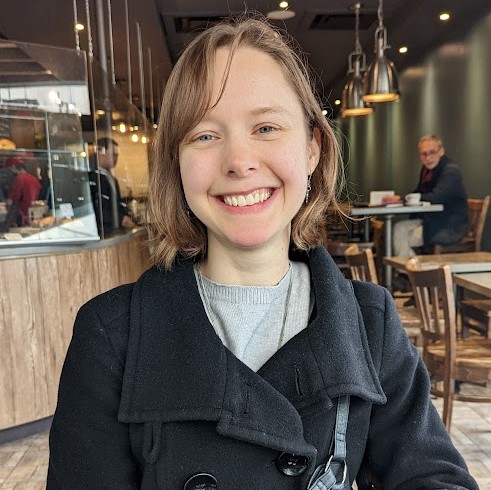By Eve Beauchemin, PhD Candidate at McGill University
Thanks to the QCBS Excellence Award, I had the opportunity to travel to Lausanne, Switzerland in August 2022 for the 18th International Symposium on Microbial Ecology hosted by the International Society for Microbial Ecology (ISME).
The ISME symposium brings together top researchers in microbial ecology from across the globe to share their recent and/or unpublished work, as well as providing a space to discuss emerging trends in microbial ecology via their roundtable sessions. It is one of the largest not-for-profit international meetings on microbial ecology in the world, with an average attendance of 2200 delegates from over 50 countries.
I was grateful to be able to attend this well-regarded conference with the generous support of QCBS. One of the main reasons I wished to attend ISME18 was with the intention of networking to find a future postdoctoral position in Europe, preferably in a French-speaking country. I set this as my goal because I want to perfect my French. Though I was born in Montreal, and my ancestry is primarily French Canadian, I never learned French because I grew up in Arizona in the United States. Since starting my PhD at McGill, I have taken French courses with the Continuing Education department to reclaim this part of my heritage. However, classes could only get me so far. I knew I needed a truly immersive experience to fully grasp the language. As such, I thought I could combine my goal of becoming fluent in French with my desire to diversify my scientific skills by landing a postdoctoral position in a French-speaking European country – where, unlike in Montreal, I would not be quite as tempted to simply “get by” with English.
At ISME18, I had the opportunity to attend stimulating lectures on various aspects of microbial ecology, including Philip Engel and Emma Slack’s fantastic keynotes on the honey bee gut microbiome and secretory IgA in the intestinal mucosa, respectively.
I also had the chance to network with scientists during the breaks and poster sessions. This can be a very daunting experience for those attending (international) conferences for the first time. However, I have a trick or two up my sleeve! If your other colleagues or your PI are also attending, ask them to introduce you to other researchers they know or have met at the conference. If you’re attending alone, I’ve found that one of the best ways to interact with people and make connections is to come up to speakers after their talks. Not only will you be able to connect with the speaker themselves, but also with other people who are also interested in the speaker’s research. Another sure-fire way of finding people who are in your field or adjacent to it is to have discussions with people at posters that interest you. If you’re unable to browse the posters on some days because you’re presenting your own, don’t fret! Some conferences have abstract booklets that you can use to find posters that interest you; you can then follow up with the presenter via email, or at least find their other work or their lab online.
When I presented my poster, I received insightful feedback on the work I presented: see the poster here! For instance, I was continually asked by different people if I had found more taxa of interest during inflammation than what I presented in my poster. I then had to explain that I couldn’t fit all of the relevant taxa onto the one graph and, thus, chose to only highlight a few. This led me to start thinking about different ways I could better summarize my data. After the conference and with a lot of thought and the help of my labmates, I have figured out a cleaner, more efficient way to present the same data – using heatmaps instead of line graphs to represent changes in the abundances of certain taxa over time (see the updated poster here). I also had the chance to introduce myself as a prospective postdoctoral fellow for several labs, which I intend to follow up on upon completion of my degree. It was very uplifting to receive interest in my work from my peers and potential future employers.

If I were to give advice on speaking with people who visit your poster, or with whom you happen to sit or stand next to at any point of the event, while it can be nerve-wracking, remember they are human and treat them as equals. It helps to have genuine curiosity in the person and their work, rather than putting them on a pedestal or assuming they’re irrelevant to you based on their field or experience. Any interaction you have could lead to a collaboration, a future position, or even a friend – you never know who might link you to those opportunities! So I find it crucial to treat people with respect and to be honest about yourself and your work. You may be surprised – by doing this, your discussions with other scientists may go smoother and be a lot more enjoyable than if you try to boast or “sell yourself”.
One last piece of advice, if I may, is to make the most of your conference experience! Many conferences, especially larger ones and those of an international scale, host a variety of fun social or art events outside of the conference itself, which are almost always worth checking out. For instance, ISME hosted an event called “Discover the Microverse,” in collaboration with National Centres of Competence in Research (NCCR) Microbiomes. The purpose of this event was to interest and engage a wider audience in microbial ecology research. This included an “Ask a Scientist” booth, as well as scientific images and short films. I was astounded and impressed at the high-quality art and videos that my fellow ISME members created. There was even the launching of a new video game called “Microbiomes“, created by the NCCR Microbiomes team in collaboration with Koboldgames. This game is fun and free to download on Android and iOS mobile devices – I’d highly recommend checking it out!
I also greatly enjoyed the concluding event of the “Discover the Microverse”, which was a panel discussion on science communication, called “Explaining the Microverse”. This discussion was led by Stephan van Duin, science communicator at The Online Scientist and consisted of several science communication experts of varying backgrounds — including Remco Kort, the curator of Micropia (a museum of microbes in Amsterdam); Emma Hodcroft, a postdoctoral fellow in molecular epidemiology at the University of Bern; Dr. Katharina Weikl, an artist and Deputy Head of Graduate Campus at the University of Zurich; and Beat Glogger, a science journalist and founder of Higgs magazine. Throughout the discussion, the panelists addressed issues relating to scientific communication strategies and how they’ve addressed them. One particularly interesting discussion revolved around scientific art as a means of communicating science and how it can be both a simple and beautiful form of communication for a general audience. The scientists on the panel saw art as a tool for scientific communication, whereas the artist (Dr. Katharina Weikl) tried to emphasize her perspective of having art for its own sake. There was a clear dissonance between the purely practical mindset of the researchers and the more exploratory viewpoint of the artist. For me, it was an informative peek into how the varied goals and backgrounds of individuals in a group can radically change how each person approaches and thinks about the same project.

Overall, I gained exactly what I had hoped I would at this conference and even more. I had eye-opening and helpful discussions about my work and the work of others, met some passionate and intelligent peers, received helpful feedback on my work, publicized myself as an up-and-coming researcher and received interest in my future career, and generally enjoyed the myriad of discussions I had on topics ranging from the human maternal milk microbiome to the importance of looking for plasmids in metagenomic data.
None of this would have been possible without the funding provided by the QCBS Excellence Award. To the members of the committee which granted me this award, I extend my heartfelt thanks! This event has paved a future for me post-graduation, beginning with a postdoc in Europe. I hope to bring back to the Quebec community the knowledge that I gain abroad, to further enhance and diversify the research being conducted here.

About the author:
Eve Beauchemin is a PhD Candidate in the lab of Corinne Maurice, PhD, at McGill University in Montreal, Québec, Canada. She first became interested in the gut microbiome and its importance to host health in an introductory microbiology class during her undergraduate career, and has stuck with it ever since! She now has a particular interest in viewing the gut microbiome through the lens of microbial ecology and host-microbe interactions.
You can find the website of the Maurice lab here: http://www.mauricelab.ca/
Eve’s Twitter: https://twitter.com/eve_beauchemin @eve_beauchemin
Eve’s LinkedIn: https://www.linkedin.com/in/eve-beauchemin/

0 Comments